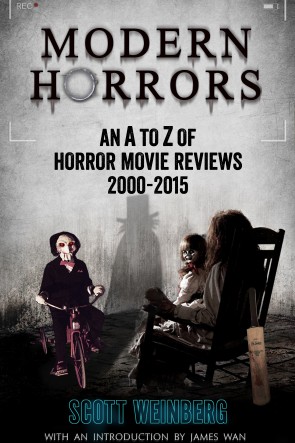Exclusive Review: STONEHEARST ASYLUM, aka ELIZA GRAVES (2014){0}
You don’t have to be mad to work there, but it helps
Brad Anderson has made a lot of television since his breakthrough film, The Machinist, a decade ago: a dozen episodes of Fringe, two apiece of The Wire, Boardwalk Empire, Treme and the US remake of The Killing, and the pilot episodes of Almost Human and Forever. He’s also managed to make two half decent films, Transsiberian (2008) and The Call (2013) – but “half decent” from the man who gave us The Machinist doesn’t really cut it, does it? Therefore, despite the promise of a supporting cast supporting that includes Sir Michael Caine, Sir Ben Kingsley, Brendan Gleeson, David Thewlis and Jason Flemyng (not to mention leads Jim Sturgess and Kate Beckinsale), I approached Stonehearst Asylum with some of the trepidation with which Edward Newgate (Sturgess) approaches the forbidding gates of the remote lunatic asylum at the start of the film.
Set some time in the late 19th century, Stonehearst Asylum (formerly known as Eliza Graves) is a loose adaptation of Edgar Allan Poe’s 1845 short story, “The System of Doctor Tarr and Professor Fether”, in which newly-qualified ‘alienist’ (a 19th century specialist in mental illness) Edward Newgate visits the eponymous asylum in the hopes of bringing modern methodology to the well-to-do hysterics, paranoiacs, phobics, deviants and schizophrenics housed therein. Upon arrival, he is met by Silas Lamb (Sir Ben, who played an similarly progressive asylum proprietor in Shutter Island), whose methods are unusual, but not inhumane, and is taken with the beauty of inmate Eliza Graves (Beckinsale), with whom he quickly becomes enamoured. As soon as she has him alone, however, Graves warns him that things are not entirely as they seem at Stonehearst Lunatic Asylum (to give the place its full, not entirely PC name), and Newgate soon realises that there is more to Silas and his oddball cohorts than meets the eye.
Stonehearst Asylum is one of those films where to relate any further plot details would inevitably spoil the viewer’s enjoyment of the film; even a working knowledge of the short story which inspired it (imaginatively and expansively adapted by screenwriter Joe Gangemi) would likely give too much of the game away. Suffice to say, then, that the film is thoroughly enjoyable, assuming one approaches it in the playful spirit with which Gangemi, Anderson and the extremely game cast intended. The tricksy script is filled with so many twists and turns, you may well feel that you’ve taken leave of your senses, as each new revelation sends the plot spinning in a new direction. You may think you know what’s going on, but I suspect you’ll only think you do.
Stonehearst Asylum isn’t a horror film as such (it’s only a PG-13 in the US, and will probably be granted a 12A here), but it arguably has a more authentic ‘Hammer horror’ than The Woman in Black (oh, to see a version of Stonehearst Asylum with Leslie Ann Down, Christopher Lee and Peter Cushing in the Beckinsale, Kingsley and Caine roles!), and could potentially have captured a similarly gargantuan audience, if only it had a stronger leading man (Sturgess is fine; Radcliffe, for one, would have been immeasurably better). But what Stonehearst Asylum lacks in the star wattage of its leading man, it more than makes up for in the strength of its supporting cast – and for having the courage of its convictions.
Embrace it in the right spirit, and you might just find Stonehearst Asylum is just what the doctor ordered.
★★★★
David Hughes (@DavidHughesTwit)








